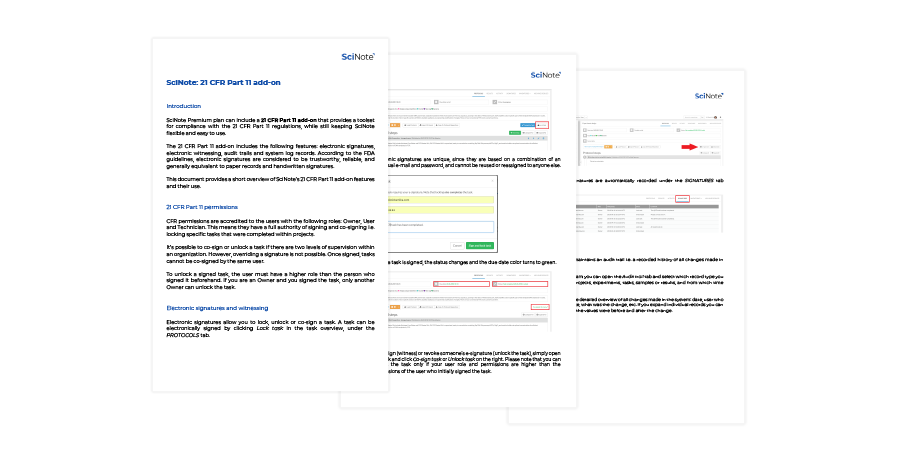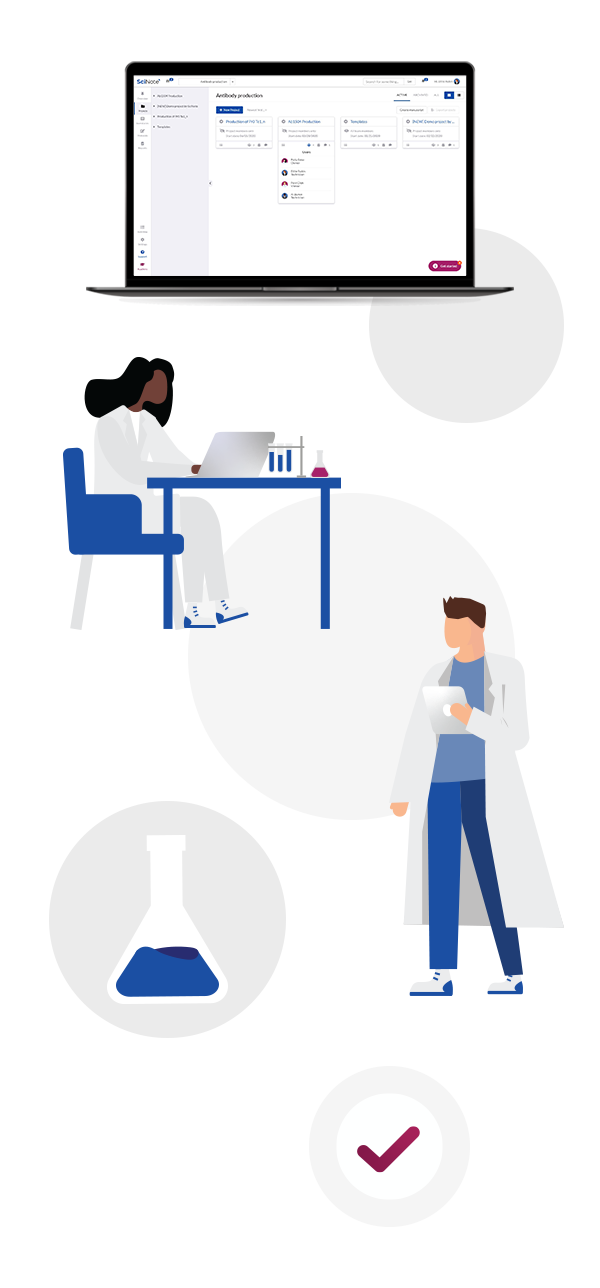
Webinar: The internet of things and your connected lab – How can you start and how much does it cost?
SciNote’s Digital Leadership webinar.
Watch the webinar recording below:
Download 21 CFR Part 11 compliance document
Get your comprehensive SciNote guide on 21 CFR part 11 compliance.
Q&A session and unanswered questions during the webinar:
Is SciNote a type of laboratory information management system (LIMS)?
SciNote is an electronic lab notebook (ELN), a slightly different system than LIMS (Laboratory Information Management System). It enables inventory management, protocols and SOP management, team collaboration, supports your lab in reaching the CFR 21 Part 11 and GLP compliance and more. SciNote can be connected to LIMS and other systems used in the lab via API.
To learn more about the similarities and differences between ELNs and LIMS, see ELN vs LIMS: a guide to differences & how to choose.
Do you still experience a user variation of results with SciNote? After all the pipetting is more or less automated?
Based on the experience described in the use case, the author, Liane Kober, commented that the team did not experience major variations. Results were reproducible and the main advantage was that the systems made the overall work easier. In addition, by optimizing the pipetting with Gilson’s smart pipettes, the team also noticed that they are now using less consumables which contributes to their sustainability efforts, besides saving paper. During the webinar, the panelists are discussiong this question more in detail (at the 46min 07sec part of the webinar recording). Take a look at the recording above and hear directly from Liane.
Would this IoT pipettes be scalable for undergraduate laboratories? Research labs are one or two people per lab but with 100+ students in the same room using a university style wifi would this be doable (apart from the cost of course)?
This question has been answered during the webinar (at the 53min 20 sec part of the webinar recording). Take a look at the recording above and hear directly from Steven from Gilson.
How to annex evidence for instruments that are not online?
One option in SciNote would be to create an inventory of instruments (a customizable table) and add all needed information in the custom columns of the table. SN inventories allow you to add files connected to each instrument, and all other types of information important for your lab. Once your instruments are listed in an inventory, you can assign i.e. connect the information about each instrument to your experiment data. It is also possible to manage booking of different lab instruments. Click here to learn more about inventory management in SciNote.
How does SciNote cope with inventory management and freezer location mapping?
To learn more about SciNote’s inventory management capabilities, visit the dedicated website or take a quick look at the videos that explain all details.
Is there an API/web service interface to data and information in ChemDraw or E-Notebook from PerkinElmer?
The information on SciNote’s API and integrations is available here. In case the tool or third party application that you would like to integrate with SciNote is not on the list of SciNote partner integrations or you would like to integrate via SciNote API contact us at premium@scinote.net.
What is currently the best way to exchange data?
SciNote has a RESTful API that 3rd party applications such as LIMS systems, data management systems, CRM, ERP systems can use to access SciNote data. RESTful APIs nowadays are one of the key concepts behind software integrations, interfacing, and interoperability. Depending on the need, integrations via RESTful API can be uni- or bidirectional offering data flows from 3rd party application into SciNote and/or from SciNote into 3rd party application. For example, an external application integrated with SciNote can create a task, a protocol, a sample, update a sample in SciNote, or can receive data such as a result file from SciNote. To learn more, visit the dedicated website.
What are the infrastructure requirements for the IoT pipette setup?
This question has been answered during the webinar (at the 53min 20 sec part of the webinar recording) as well. Take a look at the recording above and hear directly from Steven from Gilson.
Regarding SciNote, how is CFR 21 Part 11 Compliance resolved?
SciNote offers electronic signatures, audit trails, time stamps, user roles and permissions and more. If your laboratory needs to comply with FDA’s 21 CFR part 11, GLP, GMP requirements – SciNote has the right features to support you. We are proud to be the chosen solution used by researchers at the FDA.
Is there any limit for programming of digital pipettes? as steps or working time?
Currently, the PipettePilot application in Trackman Connected supports protocols with a maximum of 50 steps. Though, within those steps, you can pipette as many times as you need. All information about Gilson Connect and PIPETMAN M Connected pipettes is available here.
Is there any limit for programming of digital pipettes? as steps or working time?
Gilson has worked to make the programming interface to the pipettes very intuitive. While it takes some time to learn the PipettePilot software, we see most customers getting up and running within a few hours. PipettePilot is fully integrated with SciNote, allowing you to manage protocols and reports from your runs directly through the ELN. All information about Gilson Connect and PIPETMAN M Connected pipettes is available here.




